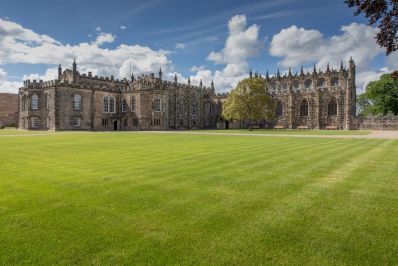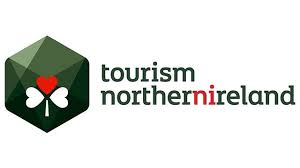New museum explores 6,000 years of faith in Britain
The Faith Museum, which has opened in north east England, is the first museum in England to explore the history of faith in Britain, from prehistory to the present day. It looks at the many ways in which faith has shaped lives and communities, through rarely seen objects, personal testimonies and contemporary commissions.

The museum sits at the heart of The Auckland Project, a unique cultural destination in Bishop Auckland, County Durham, which includes historic buildings, art galleries, gardens, extensive parkland and a heritage railway. The Faith Museum is part of the wider restoration and redevelopment of Auckland Castle.
The museum houses over 250 objects from public and private collections across England, Scotland and Wales in a 14th century wing of the castle and a striking 21st century extension, and invites visitors to consider the ways faith has shaped lives and continues to do so. In addition, half of the museum is dedicated to the work of contemporary British artists and their personal responses to faith.
The ground floor traces a path through 6,000 years of faith, beginning in the Neolithic period with the tactile Gainford Stone and ending in the year 2000. The displays feature objects on loan from 50 national and local institutions and private lenders, which complement The Auckland Project’s own collection. The objects, some of them beautiful, are often enigmatic and poignant; they are witnesses to deep reverence and forgotten customs that speak directly through time to us today.

The upper floor of the museum houses a diverse programme of temporary exhibitions and installations, reflecting contemporary issues and timeless ideas. The galleries opened with a display of works by ten contemporary British artists, offering their individual perspectives on faith today.
Walking through galleries housed in the 14th-century Scotland Wing of Auckland Castle, a never-before-displayed object found less than a mile from the castle is one of the smallest and most remarkable items on show: the Binchester Ring. Excavated in 2014 at Binchester Roman Fort, this extraordinary silver ring with carved carnelian stone inscribed with an anchor and fish is rare early evidence of Christianity in Britain.
 Auckland Castle
Auckland Castle
Other highlights include:
- The 13th-century Bodleian Bowl, an early example of evidence of Jewish communities in Britain.
- A unique altar hanging made from fragments of embroidered blue velvet, which was probably assembled after 1600 from garments worn by pre-Reformation priests, to preserve remnants of the Catholic faith.
- A wooden pulpit made around 1760 for a chapel in Teesdale built by its congregation of miners, who also donated money to buy the land and stone. John Wesley himself visited the chapel and preached from this pulpit.
- A rare surviving Tyndale Bible. This English New Testament was printed in 1536, the year William Tyndale was hunted down in exile in Antwerp and executed for heresy.
 Bodleain Bowl © Ashmolean, University of Oxford
Bodleain Bowl © Ashmolean, University of Oxford
Dominating the Great Gallery upstairs, with its high-pitched ceiling, is a dramatic installation by Mat Collishaw, Eidolon, specially created for the space. This large-scale work is complemented by more intimate pieces in the adjacent galleries, inviting us to consider how faith can be both awe-inspiring and public, yet personal and private. In a gallery looking out across the castle’s walled garden, a collection of paintings by artist Roger Wagner depict biblical scenes in modern landscapes in a poetic juxtaposition.
 Eidolon, Mat Collishaw, The Faith Museum
Eidolon, Mat Collishaw, The Faith Museum
The final gallery space invites visitors to reflect on three central questions present throughout the museum: Where do I belong? How do I live? and Am I alone? Among the artists featured are Newcastle-based artist Mani Kambo, Nicola Green, The Singh Twins, and the late Khadija Saye.
Jonathan Ruffer, Founder of The Auckland Project, said: "The Faith Museum turned out to be the hardest piece of our jigsaw. We have tried to tell stories which put into context 6,000 years of human endeavour and the restlessness of the human spirit.”
Clare Baron, Head of Exhibitions at The Auckland Project, comments: “The objects and contemporary artworks on display tell the story of how people in Britain have expressed their faith throughout history, often in a very personal way.”

The museum has seen extensive conservation work undertaken on the historically significant Grade I listed Scotland Wing of Auckland Castle. The new purpose-built extension takes the form of a medieval tithe barn and follows the line of the original perimeter wall of the castle. Conceived as a sacred storehouse, the monolithic, pitched roof building was constructed using Cop Crag sandstone, local to the North East, and the same as used at Durham Cathedral.
 The purpose-built extension
The purpose-built extension
The Auckland Project is a group of heritage attractions, galleries and gardens in the historic town of Bishop Auckland, at the heart of County Durham. Together these attractions tell the remarkable story of Bishop Auckland, from the powerful Prince Bishops of Durham to the town’s surprising connection with the Golden Age of Spanish Art.
If you or your group would like to visit the Faith Museum and the Auckland Project on a tailor-made tour of England, please do contact our friendly team today. Or perhaps you would like us to put together a dedicated religious tour or pilgrimage for your group? If so, please do get in touch.































